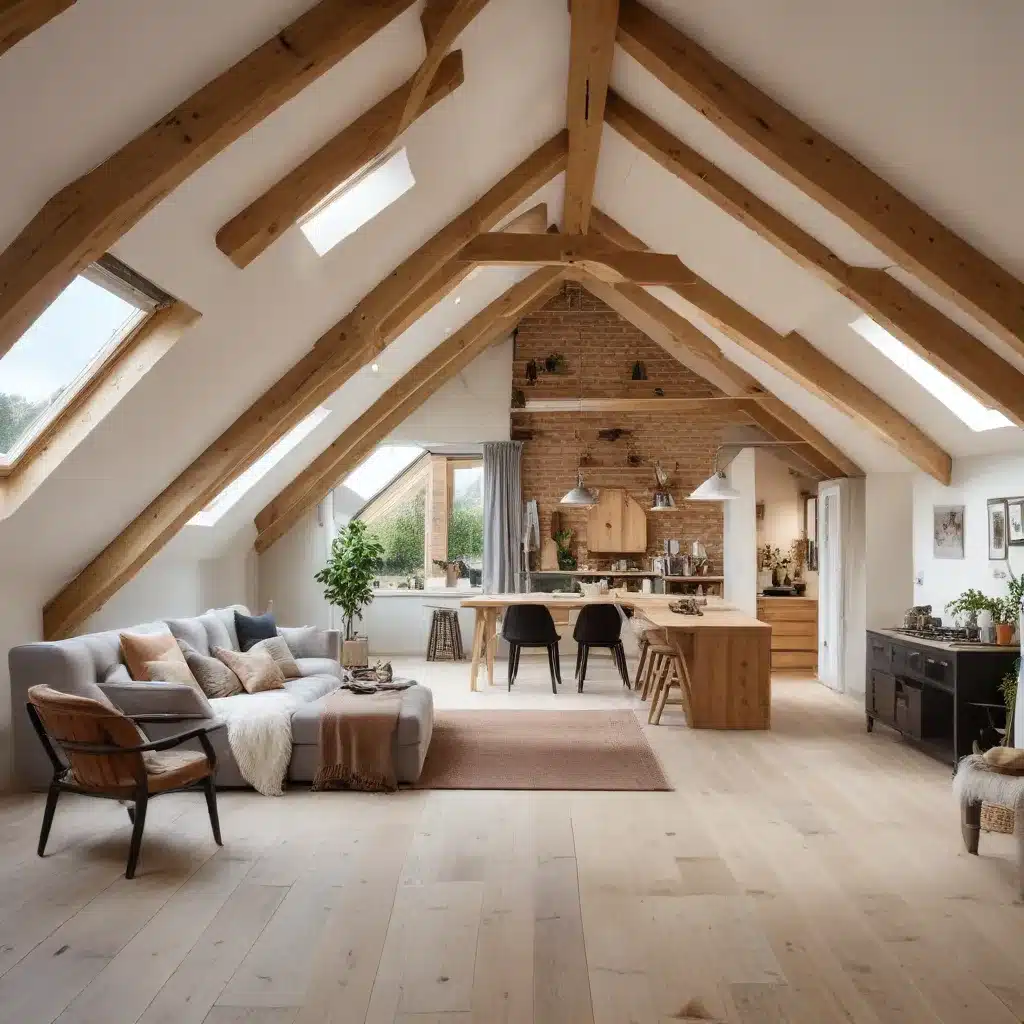
Unlocking the Potential of Sustainable Loft Conversions
As a seasoned construction professional and interior designer, I’ve had the privilege of witnessing the remarkable evolution of home renovation practices, particularly when it comes to embracing sustainable materials and construction techniques. Loft conversions have emerged as a prime example of how homeowners can transform underutilized spaces into functional, energy-efficient, and environmentally conscious living areas.
In today’s climate-conscious world, the need to incorporate sustainable principles into our homes has become increasingly imperative. Loft conversions offer a unique opportunity to not only enhance living spaces but also to reduce our environmental impact. By carefully selecting eco-friendly materials, implementing energy-efficient systems, and employing innovative design strategies, we can create loft spaces that are both aesthetically pleasing and environmentally responsible.
Sustainable Materials: Embracing the Green Revolution
One of the cornerstones of a sustainable loft conversion is the thoughtful selection of building materials. Gone are the days when homeowners were limited to traditional, resource-intensive options. The green revolution has ushered in a wealth of sustainable alternatives that not only reduce environmental impact but also contribute to a healthier indoor living environment.
Renewable and Recycled Materials
When it comes to loft conversions, the use of renewable and recycled materials is a key consideration. Reclaimed timber, for example, can add character and charm to a loft space while minimizing the demand for newly harvested wood. Similarly, bamboo and cork flooring are renewable alternatives that offer durability and aesthetic appeal.
In addition to these natural materials, homeowners can also explore the use of recycled glass, metal, and plastic for countertops, tiles, and other architectural elements. These sustainable options not only divert waste from landfills but also reduce the energy and resources required for new material production.
Low-VOC and Non-toxic Finishes
The selection of paints, stains, and other finishes is crucial for maintaining a healthy indoor air quality. Loft conversions present an opportunity to prioritize low-VOC (volatile organic compound) and non-toxic options that minimize the release of harmful chemicals into the living space.
By opting for these eco-friendly finishes, homeowners can create a safer, more breathable environment for themselves and their families. This not only enhances the overall wellbeing of the occupants but also aligns with the principles of sustainable living.
Insulation and Thermal Performance
Proper insulation is a fundamental aspect of any sustainable loft conversion. High-performance insulation materials, such as mineral wool, cellulose, or natural fiber insulation, can significantly improve the thermal efficiency of the loft space, reducing energy consumption and utility bills.
Additionally, the use of airtight construction techniques and high-performance windows can further enhance the thermal performance of the loft, ensuring a comfortable living environment while minimizing the environmental impact.
Sustainable Construction Practices: Minimizing Waste and Maximizing Efficiency
Sustainable construction practices go beyond material selection; they encompass a holistic approach to the entire renovation process. Loft conversions present an opportunity to implement responsible construction methods that minimize waste, optimize resource usage, and promote energy efficiency.
Waste Reduction and Recycling
One of the key principles of sustainable construction is the reduction and proper management of waste. Loft conversions can benefit from strategies such as pre-fabrication, where components are assembled off-site, and modular design, which minimizes on-site waste generation.
Furthermore, homeowners and contractors can make a concerted effort to recycle and repurpose construction materials wherever possible, diverting waste from landfills and contributing to a more circular economy.
Energy-Efficient Systems and Appliances
Loft conversions provide an excellent opportunity to integrate energy-efficient systems and appliances that reduce the overall energy consumption of the home. Solar panels, high-efficiency HVAC systems, and LED lighting are just a few examples of the sustainable technologies that can be incorporated into a loft conversion project.
By investing in these energy-saving solutions, homeowners can not only lower their monthly utility bills but also significantly reduce their carbon footprint, aligning with the broader goals of sustainability.
Sustainable Design Strategies
Loft conversions present a unique canvas for the integration of sustainable design strategies. Passive solar design, which harnesses the sun’s energy to regulate indoor temperatures, can be a game-changer in loft spaces. Strategically placed windows, solar shading devices, and thermal mass materials can work in harmony to minimize the need for active heating and cooling, further enhancing the energy efficiency of the loft.
Additionally, water conservation measures, such as low-flow fixtures and rainwater harvesting systems, can be seamlessly integrated into loft conversions, promoting responsible water usage and reducing the strain on local water resources.
Embracing the Future of Sustainable Living
As we navigate the ever-evolving landscape of home renovation, loft conversions have emerged as a shining example of how we can transform underutilized spaces into sustainable, energy-efficient havens. By embracing the use of renewable and recycled materials, implementing eco-friendly construction practices, and integrating innovative design strategies, homeowners can create loft spaces that not only enhance their living experience but also contribute to a more sustainable future.
Unlocking the Potential of Sustainable Loft Conversions: Key Takeaways
- Material Selection: Prioritize the use of renewable, recycled, low-VOC, and non-toxic materials to create a healthy and environmentally conscious living environment.
- Insulation and Thermal Performance: Invest in high-performance insulation and airtight construction techniques to improve the thermal efficiency of the loft space.
- Waste Reduction and Recycling: Implement strategies such as pre-fabrication and modular design to minimize waste, and actively recycle and repurpose construction materials.
- Energy-Efficient Systems and Appliances: Incorporate sustainable technologies, including solar panels, high-efficiency HVAC systems, and LED lighting, to reduce energy consumption and lower utility bills.
- Sustainable Design Strategies: Leverage passive solar design, water conservation measures, and other innovative design approaches to create a loft that is both aesthetically pleasing and environmentally responsible.
By embracing these sustainable principles, homeowners can transform their loft spaces into eco-friendly sanctuaries that not only enhance their living experience but also contribute to a greener, more sustainable future.


